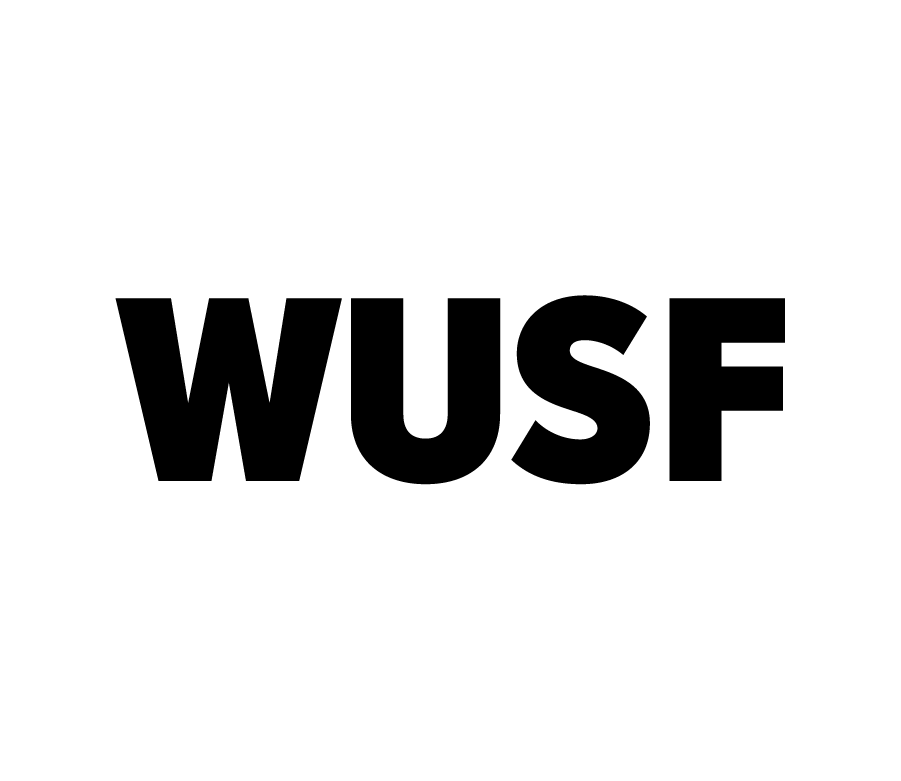00;00;00;01 - 00;00;23;18
Dr. Charles McGraw Groh
The thing that really fascinates me is actually the use of color. This is something really important in the exhibit because it actually is where the term yellow journalism actually comes from. Imagine like seeing the newspaper in black and white and then all of a sudden now you're seeing yellow, red, blue. Right. I mean, talk about something that's just completely different Hi.
00;00;24;29 - 00;01;09;07
Malaika Hollist
Welcome to Season two of the Arts Aixs Florida podcast. I'm your host Malaika Hollist. Each episode, we amplify the voices of the diverse art nonprofit organizations in our community. Conversations Community and Connection is right here on the Arts Axiss Florida podcast .Support for Arts Access Florida comes from Community Foundation, Tampa Bay championing philanthropy, encouraging and connecting givers to bring lasting good investing in education and economic mobility.
00;01;10;00 - 00;01;43;01
Malaika Hollist
Learn more at C F Tampa Bay dot org. That's C F Tampa Bay dot org. Today we speak with Dr. Charles McGraw. Groh on the current exhibit. Stop the presses, fake news and the War of 1898 at the Henry B Plant Museum. In this episode, you will get a brief history on the war of 1898. Its influence on Tampa Bay history. A definition of yellow journalism. And what was fake news at this time. We hope you
00;01;43;01 - 00;01;52;25
Malaika Hollist
love this next episode Would you mind just introducing yourself to our audience?
00;01;53;12 - 00;02;05;17
Dr. Charles McGraw Groh
Sure. My name is Charles McGraw Groh and I'm an associate professor at the University of Tampa and I'm also the guest curator of the exhibit that's currently on display at the Henry B Plant Museum.
00;02;06;07 - 00;02;08;00
Malaika Hollist
So what does it mean to be a curator?
00;02;09;12 - 00;02;26;23
Dr. Charles McGraw Groh
That's a great question. So essentially what it means in the context of public history is telling a story about the past through objects. So as opposed to the way that we traditionally tell history stories, which is in writing.
00;02;27;13 - 00;02;44;06
Malaika Hollist
Ah, OK. Ooh, I like that definition. OK, that makes a lot of sense to me. OK, so the Henry B Plant Museum consistently creates unique exhibits. Can you tell us about the most recent one, the "Stop the Presses, Fake News and the war of 1898"?
00;02;44;29 - 00;03;21;17
Dr. Charles McGraw Groh
Sure. Stop the Presses is an exploration of how new communication technology gave rise to a style of journalism in the years right before the war of 1898. So then we talk about how journalism played a role in the U.S. intervention in Cuba, the war against Spain in 1898 and its aftermath. Then we particularly pay attention to some of the myths that have been passed down about the role of the press in that conflict.
00;03;22;12 - 00;03;35;00
Malaika Hollist
OK. And then for those who aren't familiar, myself included, can you give just a brief maybe overview of what was the war of 1898.
00;03;35;26 - 00;04;10;21
Dr. Charles McGraw Groh
Yeah, I'd be happy to. And it's such an important conflict for people in Tampa to know about because it's such a big part of our history. So the center of course is not about us to understand the conflict in 1898 you have to go back just a couple of years before or in 1895 Cubans launched the third war for independence events there basically an attempt to achieve independence from Spain as a colonial power and this is something that they'd been pursuing on and off for about 30 years.
00;04;11;13 - 00;04;48;02
Dr. Charles McGraw Groh
In 1895 of course there was a large Cuban community in Tampa, so they were directly involved in revolutionary activity. The next year. 1896 Filipinos also launched a war for independence on the other side of the globe against Spain. And so Spain was involved in a two front war this is the conflict that the United States intervened in. In 1898 they declared war against Spain, but the settlement was a real game changer for the United States because it became an imperial power.
00;04;48;16 - 00;05;26;29
Dr. Charles McGraw Groh
United States claimed the Philippines, Puerto Rico, Guam as colonies in the settlement. They took the opportunity of this moment to formally annex Hawaii and they placed severe limitations on Cuban Independence, which would essentially kind of set in motion the kind of troubled relations between the United States and Cuba for the next century. And it also involved the United States in another war because the Filipinos who had been attempting to gain independence from Spain now launched a war of independence, which they lost against the United States.
00;05;27;15 - 00;05;34;24
Malaika Hollist
Very interesting. So how did the press play a role in in this war? What was the press even at this time?
00;05;35;23 - 00;06;05;13
Dr. Charles McGraw Groh
OK, so when we talk about the press, what we have to recognize is that there are multiple forms of press that we can actually talk about. And so we actually engage several different kinds of reporting. So the bulk of the exhibit is, of course, the reporting that is associated with yellow journalism. So a kind of sensationalistic style of reporting that came into existence just before the war.
00;06;06;11 - 00;06;35;08
Dr. Charles McGraw Groh
We also try and remind our audience that that's actually not the mainstream press most newspapers continued in similar fashion to report in a much more restrained manner that we associate with the state there are biases, though, and so we also draw comparison to other really important developments in journalism, like the expansion of the black press in this period.
00;06;35;15 - 00;07;04;17
Dr. Charles McGraw Groh
That provided an alternative viewpoint to kind of course correct some of the things that we're hearing in the main press so that's the range. But as I say, you know, the bulk of the exhibit is concerned with yellow journalism and whether or not that style of journalism played a central role in encouraging the intervention. And then also perhaps, you know, kind of shaping people's understanding of the outcome.
00;07;05;18 - 00;07;26;01
Malaika Hollist
OK, so to take it back, I have a couple of questions. So you described yellow journalism as sensational journalism what would you compare that to now? Is that kind of like there's the news and then there's like, you know, kind of like the tabloid kind of journalism that's like more entertainment focused. Is that kind of the difference?
00;07;26;15 - 00;07;56;25
Dr. Charles McGraw Groh
That's a great comparison. So when you look at the rise of yellow journalism, and we can talk about some of the technology that underwrites this development, but what it means is that there were certain papers and we primarily talk about Hearst and Pulitzer. So The New York Journal in the New York world that basically switched the focus in terms of audience to a more popular audience.
00;07;56;25 - 00;08;29;12
Dr. Charles McGraw Groh
So they were trying to sell a lot more papers by targeting working class people in New York, immigrant communities in New York. And so they switched the style of journalism to be, first of all, very visually. They had these large kind of headlines that were called scare heads that were designed to titillate. They tended to include a lot of graphic images they also tended to, before the war, focused in on, you know, vices and crime.
00;08;30;01 - 00;08;54;00
Dr. Charles McGraw Groh
So when I say sensationalism isn't the actual topic that was being explored was was it sensationalistic? And they also introduced celebrity correspondents so you followed the story just because the person who was reporting it where it's famous. Right. So I think you could probably see a lot of connections to what you just referred to as, you know, kind of tabloid journalism.
00;08;54;00 - 00;09;02;06
Dr. Charles McGraw Groh
You know, do you look at clickbait on your phone? Do you look at the headlines in the grocery store checkout?
00;09;02;15 - 00;09;08;09
Malaika Hollist
OK, I like that. That makes a lot of sense. You mentioned Joseph Pulitzer. Can you explain why he's important to the story?
00;09;08;18 - 00;09;45;16
Dr. Charles McGraw Groh
Joseph Pulitzer was the owner and editor of The New York World, How to pronounce the impact on journalism. And as I said, he really initiates this story for us because he's really the person who is pushing the technological revolution that results in journalism and you know, this particular story, I think obviously doesn't serve his image well because, you know, we're dealing with, again, this very exaggerated style of reporting that has an impact on the events of 1898.
00;09;46;01 - 00;10;02;11
Dr. Charles McGraw Groh
But I do think it's important to recognize that so many of his innovations are still so central to how we engage news and the construction of newspapers. So he's made a really lasting impact on our culture.
00;10;03;02 - 00;10;11;24
Malaika Hollist
And then you also mentioned the black press. What was the difference between the role of white press and black press?
00;10;12;06 - 00;10;48;01
Dr. Charles McGraw Groh
This is such an important question and I'm so glad it's something that we're able to feature in the exhibit. So the dominant press, the mainstream press either ignored the lives of African-Americans altogether or simply reported on stories that were, you know, rather negative stories about urban problems. And so the black press played a vital role actually continues to play a vital role in our society because it is where black people could look to to find themselves represented.
00;10;48;11 - 00;11;18;02
Dr. Charles McGraw Groh
And it can be everything from, you know, like society columns to like, you know, local events or, you know, things of just regular importance that, again, white audiences would expect to see in different portions of the newspaper. And then, of course, this became vital in terms of the reporting in 1898 because of the large amount of African-American soldiers that were in the conflict and this is true in the intervention in Cuba.
00;11;18;12 - 00;11;52;15
Dr. Charles McGraw Groh
And then this is true for the US military occupations of Cuba and the Philippines. So these troops that were long standing in the context of their service were disparaged in the mainstream press. And so the editors of black newspapers did a lot of due diligence in 1898 and the years immediately after to solicit letters from people who served to correct the record and.
00;12;02;09 - 00;12;19;17
Malaika Hollist
So I guess I'm wondering, do you feel that the role of the press during this time posit tively or negatively reported the war of 1898. I guess I'm, I'm curious what what was being reported was accurate?
00;12;20;20 - 00;12;46;23
Dr. Charles McGraw Groh
That's such a wonderful question. So, so I would say it is both and I think one of the things that is so wonderful about the American historical experience is that the press has never just been one thing, you know and as we think about you know kind of current global events, I mean the importance of a free press where there's a range of years is really critical.
00;12;47;14 - 00;13;21;24
Dr. Charles McGraw Groh
And I think one of the lessons that comes out of this exhibit is that you really do need to have multiple sources of information. So certainly we followed some of the really exaggerated stories or that exaggerated atrocities of race that blamed the Spanish for the destruction of the USS Maine. Before there was any kind of investigation. And so we try and expose, you know, some of those, you know, again, obvious attempts to exaggerate or distort the news we also focus on things that are more subtle.
00;13;22;10 - 00;13;50;00
Dr. Charles McGraw Groh
The fact that that trend of celebrity reporting continued in the war really means that a lot of what was reported wasn't actually the center of what was happening. It was wherever that particular journal was was right, which I think is a much more subtle way in which information is not really being presented in a way that allows you to understand the big picture.
00;13;50;03 - 00;14;20;29
Dr. Charles McGraw Groh
Right. But one of the things that I do think is really important is that when you look particularly at, you know, this huge issue of the United States becoming an empire, a place that has overseas possessions, that was really unsettling to a lot of Americans. And I think you see and you see very much on display in the exhibit, a range of views that are appearing in the press.
00;14;21;03 - 00;14;30;05
Dr. Charles McGraw Groh
So whatever decision actually happened, it's not because people didn't have information so I think it's important that we recognize that.
00;14;30;25 - 00;14;52;02
Malaika Hollist
The type of news that people were getting could be depended on what resource they were using. And that and depending on that resource, that information could be positive. Negative, true. Untrue. Very typical to kind of the news. Now, it's really dependent on where you're getting it to and how the story is told basically.
00;14;52;18 - 00;15;30;10
Dr. Charles McGraw Groh
Yeah, I'll give you a really good example of that. So, you know, probably one of the most famous incident that we discuss in the exhibit is the destruction of the USS Maine. So the US vessel was anchored in Havana Harbor and it exploded, ultimately killing 266 servicemen. So just a horrendous tragedy so most newspapers in the United States withheld saying anything about cause waiting for a formal naval court of inquiry.
00;15;30;29 - 00;16;00;08
Dr. Charles McGraw Groh
Of course, Hearst and Pullitzer. So this is yellow journalism immediately blamed Spain and Rhode stories where they said they knew it was a torpedo. And so this information, of course, was not correct. But I think the important thing to understand is by this point in time, a lot of people were really, you know, aware of the false reporting in these two newspaper so a lot of people took it with a grain of salt.
00;16;00;29 - 00;16;22;10
Dr. Charles McGraw Groh
It's also clear that they didn't have a large readership outside of New York. So it really doesn't make sense to blame them for the kind of popular support for a war that took place after the explosion. But what I will say is that if you were already somebody who did support war, then these papers reflected your point of view.
00;16;22;20 - 00;16;32;04
Dr. Charles McGraw Groh
Right. And I think that's still something that we should be thinking about when we think about the news is that, you know, people seem to be drawn to things that say what they already think.
00;16;32;19 - 00;16;33;02
Malaika Hollist
Right.
00;16;33;07 - 00;16;45;28
Dr. Charles McGraw Groh
And so the goal has to be to look for alternatives sources of information. And so what we're saying is that in the context of the time, it was definitely easy to access alternative sources of information.
00;16;46;02 - 00;16;51;12
Malaika Hollist
Is there specific technology that you could speak about that was used in journalism during this time?
00;16;52;08 - 00;17;17;10
Dr. Charles McGraw Groh
Sure. And I really like to think about this because again, I think, you know, for me, I think a lot about how technology, communications, technology is affecting the way that I receive information now. And so, you know, I like to think back on the fact that, hey, you know, this earlier generation was going through the same thing. So there were several things that took place at the same time.
00;17;17;29 - 00;18;00;19
Dr. Charles McGraw Groh
Pulitzer himself, Joseph Pulitzer, played a huge role in actually encouraging the manufacture of much larger, much faster printing presses. And then combined with the innovation of the Linotype, which was used to set high and then also the development of new paper technology, essentially switching from rag paper to wood pulp based paper. All of these things really allowed for a different style of journalism because these papers could have much bigger editions.
00;18;01;16 - 00;18;22;05
Dr. Charles McGraw Groh
They could do them multiple times a day, right? So the idea that you would have an early edition and a late edition, which is where stop the presses comes from, right? Something is kind of done right away. But also, again, the fact that you can use these big scare heads, that you could use lots of illustrations and even photographs color, right?
00;18;22;06 - 00;18;48;00
Dr. Charles McGraw Groh
Like all of those things changed the way that people saw the newspaper. Right? And so that's what facilitated because not only, you know, all these things, you could do it cheaply. Right? So you could sell the paper for just a penny or two, which meant, again, you weren't necessarily targeting. You weren't targeting an elite audience. You were targeting a more general audience with different kinds of stories.
00;18;48;22 - 00;19;09;14
Malaika Hollist
Oh, what a what an exciting time that must have been for them. You know, like, I'm just imagining it's kind of like the cell phone coming out, like writing, like, acknowledges right in your hand. So I imagine it's very similar, like and then for it to be able to come out multiple times in one day, potentially, like you're just constantly being said news.
00;19;10;00 - 00;19;39;06
Dr. Charles McGraw Groh
Exactly. Yeah. And as I say, the thing that really fascinate me, I think is actually the use of color. And this is something really important in the exhibit because it actually is where the term yellow journalism actually comes from, but it's the appearance of color comic supplements in the paper. And so imagine like seeing the newspaper in black and white and then all of a sudden now you're seeing yellow, red, blue, right?
00;19;39;06 - 00;20;29;29
Dr. Charles McGraw Groh
I mean, it's just completely different what we're presenting people in Tampa is something really unique and very rare. So I really hope as many people as possible can see it. So I was mentioning the color comics and one of the things that we are able to focus on in the exhibit because of this really fabulous material that we have on loan is a comic cure called Yellow Kid, and he appeared in the New York World, which is the Pulitzer paper in 1894, 1895, and he became the first nationally famous comic character the creator, Richard Alcohol, went on to create Buster Brown, who I think a lot of my contemporaries are a little bit more familiar
00;20;29;29 - 00;20;51;01
Dr. Charles McGraw Groh
with, but he was this Irish-American street kid in a New York tenement who his head was shaved because he had lice and he wore this oversize yellow nightgown and his image was used to market all kinds of products. So he was the first, you know, kind of merchandise.
00;20;51;02 - 00;20;51;11
Malaika Hollist
Yeah like the mascot
00;20;51;23 - 00;21;23;24
Dr. Charles McGraw Groh
Comic character. Yeah. And so, you know, he appeared on everything from like toys to whiskey bottles, babies fans to Cigaret cases, you name it. He sold it. And we have some really extraordinary material. We have actually original a kind of comic paper from the 1890s we also have a lot of these original material. So it's coming to, it's pulling together material from a private collection, an art repository.
00;21;23;24 - 00;21;49;18
Dr. Charles McGraw Groh
So again, really rare that people can actually see this kind of material. And this character actually was fought over by the two papers that I've been talking about. And so that's where the term yellow journalism comes from because yellow kid became synonymous with the style of the paper. And so they went from calling it the yellow kid press to the yellow press.
00;21;49;18 - 00;22;22;12
Dr. Charles McGraw Groh
The yellow journalism I see. So, so that's, I think something that just people need to see. And then the other thing that I that I would kind of direct your attention to is I've mentioned the fact that the people who are correspondents in the war were celebrities. And so the most important of those are Richard Harding Davis, famous author, Stephen Crane, famous author, but also Frederick Remington, who is such a prominent artist of his period.
00;22;22;16 - 00;23;10;01
Dr. Charles McGraw Groh
And he was sent to Cuba by Hearst to cover the Cuban war prior to the intervention and then he later traveled first here to the Tampa Bay Hotel and then to Cuba once the US war was declared and we have an extraordinary range of materials on display, original Remington that are, I think, essential for people to see, because what we've been able to do and I just again, I'm just so excited about this, is we've been able to bring in some of the hand sketches that he did on the spot which are coming from the Frederick Remington Museum in New York.
00;23;10;13 - 00;23;32;28
Dr. Charles McGraw Groh
But then we allow you to compare them side by side to the original pieces, which we've brought in from different collections. So you can actually follow the process of how this work came into existence. And as I said, that's not something that you can ever see because these materials are housed in different repositories.
00;23;33;16 - 00;23;36;21
Malaika Hollist
Ooh and now they're hearing in Tampa Bay
00;23;37;10 - 00;23;38;15
Dr. Charles McGraw Groh
Yeah, exactly.
00;23;39;01 - 00;23;47;08
Malaika Hollist
All right. So everyone, you can see the Stop the Presses exhibit at the Henry B Plant Museum and how long is the exhibit open for?
00;23;48;01 - 00;23;52;29
Dr. Charles McGraw Groh
The exhibit is actually running through the year, so it will be there for December.
00;23;53;12 - 00;24;00;14
Malaika Hollist
Awesome. OK, so much time you can come multiple times, everyone. That's basically what he's told you. You can come see it multiple times.
00;24;01;01 - 00;24;30;08
Dr. Charles McGraw Groh
And we actually have a lot of special programs that are being presented in conjunction with our partner at the Poynter Institute. So if you go to the Henry B Plant Museum website, you can get more information. But there's going to be if you're interested in comic arts, there's going to be somebody coming down to talk about the impact of Yellow Kid on modern comics.
00;24;31;07 - 00;24;43;22
Dr. Charles McGraw Groh
If you're interested in Remington, we have the curator from the Remington Museum coming in from New York. So just an incredible range of programs. So yes, we encourage people to come back multiple times and be part of this conversation.
00;24;44;16 - 00;25;05;12
Malaika Hollist
Awesome. Well, thank you so much for being on and thank you guys all for listening. Wow, that was enlightening. How lucky are we that this exhibit has found its way to the Tampa community to see everything yourself. Check out the exhibit at the Henry B Plant Museum on the University of Tampa campus. Open now until the end of the year.
00;25;05;29 - 00;25;30;09
Malaika Hollist
Thank you to Dr. Groh again, and we will see you in the next episode. We hope you enjoyed listening to this episode of the Arts Axis Florida podcast. You can find more information on today's guests in the show notes. You can follow us on Facebook and Instagram by searching Arts Axis Florida or go to our website, Arts Axis Florida dot org to get access to the arts.
00;25;30;21 - 00;25;55;17
Malaika Hollist
That's Arts A X I S F L dot org. Our show is a product of WUSF Public Media and made possible by our sponsors Community Foundation, Tampa Bay and Gobioff Foundation. A special thanks to our editor Scott Wachtler and many more who make this show possible. Copyright 2022 WUSF Public Media. Hi.











